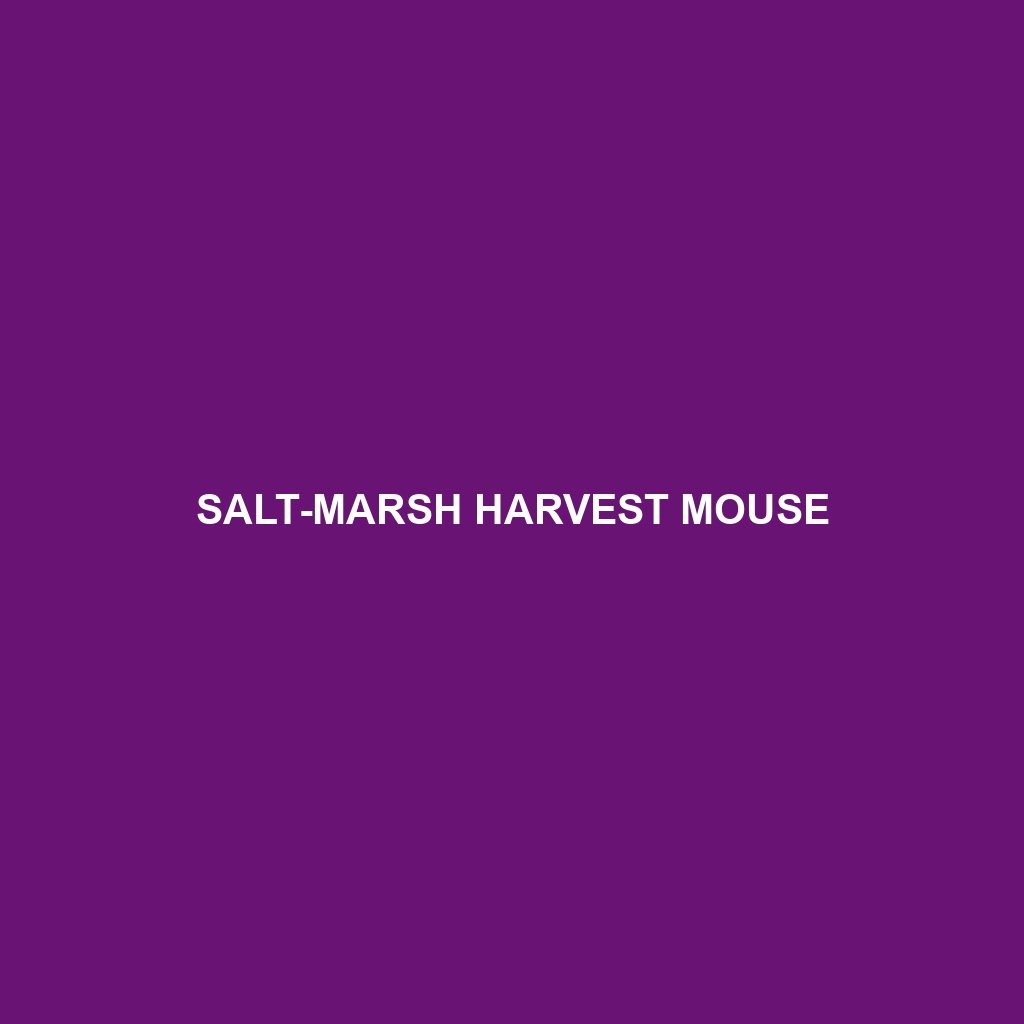Salt-marsh Harvest Mouse (Reithrodontomys raviventris)
Common Name: Salt-marsh Harvest Mouse
Scientific Name: Reithrodontomys raviventris
Habitat:
The Salt-marsh Harvest Mouse is primarily found along the coastal regions of California, particularly in the salt marshes and brackish wetlands of the San Francisco Bay and surrounding areas. These habitats are characterized by their saline environment, comprised of tall grasses, sedges, and other vegetation that thrive in wet, marshy conditions. The connectivity of these habitats is crucial for their survival as they prefer damp, high-natured areas that provide both shelter and food.
Physical Characteristics:
Salt-marsh Harvest Mice are small rodents, averaging 4 to 6 inches in length, including their tail. They possess small, rounded ears and a slender body covered in soft, light brown fur with a cream-colored underbelly. Their tail is often about the same length as their body, providing balance. Notable features include their large, dark eyes that offer excellent vision in low-light conditions, which is essential for their nocturnal lifestyle.
Behavior:
These mice are primarily nocturnal and exhibit a range of interesting behaviors. They are known for their agility and proficient climbing abilities, often moving through dense vegetation to evade predators. Salt-marsh Harvest Mice are also territorial, marking their environment with scent markings. They are social creatures and can often be found in small family groups, engaged in foraging or grooming each other as a form of social bonding.
Diet:
The diet of the Salt-marsh Harvest Mouse predominantly consists of seeds, grains, and various plant materials found in their marshy habitats. They have a preference for grasses and often forage among the dense vegetation. This rodent plays a vital role in seed dispersal, aiding in the maintenance of their ecosystem’s plant diversity.
Reproduction:
Salt-marsh Harvest Mice breed during the warmer months, typically from spring through early fall. The breeding season can result in multiple litters, with an average of four to six offspring per litter. The young are altricial at birth, meaning they are born hairless and blind, requiring significant maternal care before they venture out into the world.
Conservation Status:
The Salt-marsh Harvest Mouse is listed as an endangered species due to habitat loss and degradation from urban development, agricultural expansion, and rising sea levels. Conservation efforts have been implemented to restore its natural habitats, but ongoing threats to its environment continue to challenge its survival.
Interesting Facts:
Did you know that the Salt-marsh Harvest Mouse can swim? This unique adaptation allows them to navigate through the flooded areas of their salt marsh habitat. They also play an important role in their ecosystem by serving as prey for various predators, including birds of prey and snakes.
Role in Ecosystem:
The Salt-marsh Harvest Mouse is crucial in maintaining the ecological balance of their marshland habitat. As herbivores, they help control the growth of vegetation by feeding on plants and seeds, promoting the regeneration of other species. Additionally, they serve as a food source for various predators, contributing to the food chain and overall health of the coastal ecosystems they inhabit.
